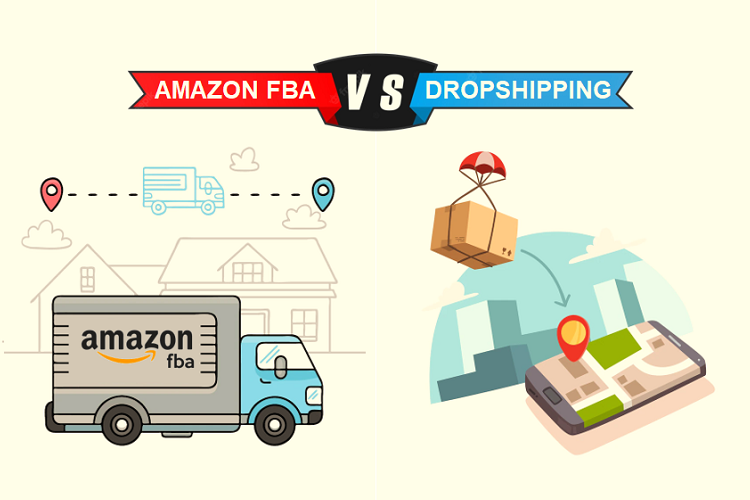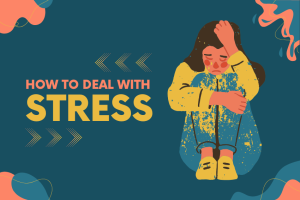Running a successful eStore requires a lot of hard work along with deep research on complex choices that you need to make. The Key is to find the solution for basic operational hurdles which might come along your way. One such difficult choice is to decide on the basic model of operation, Amazon FBA or dropshipping.
In this article, through an analysis of Amazon FBA vs dropshipping, we will assist you in finding the better suiting solution for your estore. Let’s dive in.
What is Amazon FBA and How Does it Work?
Amazon provides sellers with two kinds of operating platforms. Fulfillment by Amazon (FBA) and Fulfillment by Merchant (FBM).
Amazon FBA is a service Amazon offers to sellers wherein Amazon manages warehousing products, shipping service, and customer support management. Sellers have to pay a minimum fee to avail Amazon’s FBA services.
FBA sellers are required to send their products to Amazon’s fulfillment centers, where they are packed and dispatched upon receiving orders. Amazon manages shipping and customer service related to the products.
The goal of Amazon FBA was to provide consumer satisfaction, as well as to streamline the shipping and customer services management for sellers.
What is Dropshipping and How it Works?
In dropshipping model, the sellers just need to source products from a suitable supplier and list them in their shop. They are not required to buy the inventory and store it. Instead, once they receive the order, the supplier will pack and ship the item to the buyer.
The profit here is the price difference. Online store sellers will source the item at a lower price and list it at a respectively higher legitimate cost.
Amazon FBA vs Dropshipping: What Suits Your Online Store?

Online store operations can be divided into product sourcing/manufacturing, Amazon product listing, marketing, shipping, and customer support. Apart from these, you should also calculate the investment and profits, to find a feasible conclusion.
Based on the departments where dropshipping and Amazon FBA affects, let’s analyze which model best suits an online store.
Marketing
Dropshipping doesn’t have any marketing perks, at the same time it doesn’t restrict any of your marketing initiatives. Vendors have access to customer contact for remarketing and branding activities. Though it’s better to have your own website in case you want to work with this model.
Amazon FBA doesn’t give you access to buyer contact data. On working with this model you might be the seller but the promoted brand will be Amazon, so it offers limited branding. Though as an Amazon FBA seller you might achieve prioritized listing, better product/seller ranking, and authentic feedback.
Taking FBA service gives your product Amazon’s brand name. You also get an Amazon Prime badge that instills trust amongst buyers about your service. With FBA, you share Amazon’s consumer base, allowing you a ready market for sales.
Shipping
In dropshipping model, sellers do not need to maintain inventory. The orders are delivered directly from the suppliers. But, as the goods are delivered from the suppliers, dealing with product quality issues and poor packaging is a challenge.
But, unlike Amazon FBA here you can control your shipping conditions for sensitive items.
Amazon FBA follows the best-in-industry shipping process. Their packaging and delivery capabilities are very standard. In case of a loss to the product in the warehouse, the company provides compensation. Though there are strict guidelines for the type of product that can be shipped using FBA.
Customer Support
Running an Online Store is not possible without proper customer support and service. While in Amazon FBA you get full customer management support in dropshipping you will need to establish its infrastructure and get trained human resources.
Amazon FBA maintains high customer communication standards. It will notify the buyer once an order is made, dispatched, in transit, and out for delivery. In case a customer wants to track the order or cancel it, they get easy access. Amazon customer support manages any issue a buyer may have with the product if it is needed to be returned or exchanged. It also manages the refund for canceled or unsatisfactory products.
Customer support is a costly setup. You need to hire and train staff for better buyer help. In dropshipping model, either you can hire and train or outsource customer support management to a third party.
Investment
For a seller, Amazon FBA vs dropshipping has a considerable difference in investment.
Amazon FBA doesn’t need you to build a website. Developing a website and maintaining involves regular costs. However, you will have to pay Amazon FBA a seller registration fee. Apart from that, it will bill you for every referral which comes through Amazon marketing initiatives, called a referral fee. There is also a warehouse fee to store your goods and if any of your products are stored for more than 365 days, it will add to the bill.
The fee for Amazon FBA along with the warehousing charge might feel costly against your product value and its profit margins. In comparison to your product’s weight and size, it might feel unjustified for some of the sellers who sell smaller items. So, the investment with FBA is high.
You don’t need large capital to begin a dropshipping business. A basic set up cost is all that is required. It doesn’t require you to buy an inventory or manufacture goods.
It gets you access to all consumer contacts. This can help you build a stable client relationship. Also, these contacts can be used for remarketing.
In dropshipping you cannot control the product quality. This drawback eats a lot of time and money, it also wastes crucial buyers
Growth
Amazon FBA facilitates you with the option of multi-channel fulfillment. Thereby you can manage orders on other eCommerce platforms through FBA. This allows you extra room for scaling up.
The overall facilities of Amazon FBA conclude with chances of better business growth with high margins and lower risk involved. You are getting branding, service, customer support, and prioritized marketing options. This also affects your seller ranking positively. As a vendor, you just need to focus on product and supply.
Many sellers are attracted to the features offered by Amazon FBA, which makes it a heavily competitive zone. You might find many vendors selling similar products like yours if you are not selling any unique item.
Difference Between Amazon FBA and Dropshipping
We know the pros and cons of dropshipping and Amazon FBA with regard to your online store’s operations. Let’s see the key differences between these two models.
Amazon FBA |
Dropshipping |
| High investment in terms of member fees, referrals, storage charges, etc. | Low investment. |
| Sellers can control product quality. | No control over product quality. |
| High quality of packaging. | No control over packaging quality. |
| Quick, trackable best-in-class shipping. | Struggle to find perfect shipping partners. |
| Bounding with strict FBA guidelines and sellers cannot have customized stores. | Can set up a customized store. |
| Competition is high but FBA sellers are supported by FBA’s prioritized marketing and better profit margins. | High competition with the challenge of keeping cost-price competitive. This reduces profit margins. |
| No need to set up a website. | Need to set up a website. |
| Less branding opportunities. | Can do branding. |
| Good scaling opportunities but restricted re-stock. | Restricted scaling opportunity. |
To Conclude
What will be the best model for your online store will also depend on the kind of business you have visualized. The kind of products you want to sell and the investment support you have.
In Amazon FBA vs dropshipping, the dropshipping provides better scope for sellers with less investment. But, if you are planning big on Amazon then FBA is the route preferred. However, it will be advised to calculate every step, right from investment to return, before you make a choice.


